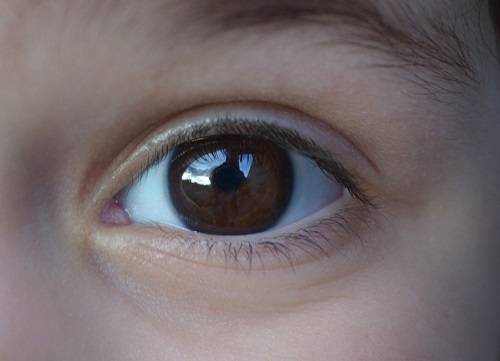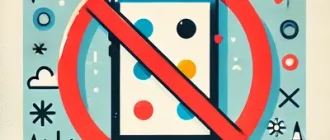As a parent, you may have noticed your child closing one eye when trying to focus on something, whether it’s reading a book, watching TV, or playing outside. This behavior may seem odd, but it can be a sign of an underlying eye issue that requires attention. In this article, we will explore the reasons behind this behavior, common conditions associated with it, and what steps you can take to help your child.
Understanding the Behavior: Why One Eye?

Children often close one eye when focusing to compensate for visual problems. Closing one eye helps reduce the blurriness or double vision that they might be experiencing. This can be particularly noticeable when they are trying to focus on something close up or far away.
Here are some of the most common causes of this behavior:
Common Causes of One-Eye Closing
| Cause | Description | Symptoms |
|---|---|---|
| Strabismus (Crossed Eyes) | A condition where the eyes don’t align properly, causing double vision. By closing one eye, the child blocks the misaligned eye’s image. | Double vision, misaligned eyes, head tilting. |
| Amblyopia (Lazy Eye) | One eye is weaker than the other, leading to blurry vision. The child might close the weaker eye to see clearly. | Blurry vision in one eye, poor depth perception, squinting. |
| Astigmatism | An irregularly shaped cornea can make vision blurry. Closing one eye may help the child focus better. | Blurred or distorted vision, eye strain, headaches. |
| Convergence Insufficiency | Difficulty in focusing both eyes together on a close object. Closing one eye makes focusing easier. | Eye strain, double vision, difficulty reading. |
| Refractive Error (Nearsightedness/Farsightedness) | Vision problems that make objects near or far appear blurry. Closing one eye may help sharpen vision. | Blurry vision at certain distances, squinting, eye strain. |
Case Study: The Curious Case of Emma
Emma, a bright and energetic 6-year-old, loved reading storybooks. However, her teacher noticed that she often closed her right eye while reading in class. At home, her parents observed the same thing when Emma was watching TV or playing with her toys. Concerned, they took her to an eye doctor.
After a comprehensive eye exam, it turned out that Emma had amblyopia in her right eye, commonly known as lazy eye. By closing one eye, Emma was trying to compensate for the blurry vision in her weaker eye. The doctor prescribed corrective glasses and eye patch therapy for the stronger eye to encourage the weaker one to work harder. With time and treatment, Emma’s vision improved, and she no longer needed to close one eye.
What Should You Do If Your Child Closes One Eye?
If you notice your child frequently closing one eye when focusing, it’s important to take the following steps:
- Observe their behavior: When do they close one eye? Is it when they’re reading, watching TV, or looking at distant objects? Make a note of when it happens and how often.
- Schedule an eye exam: Visit an optometrist or pediatric ophthalmologist for a comprehensive eye exam. They will assess whether your child has any visual impairments or conditions like strabismus or amblyopia.
- Follow the prescribed treatment: Depending on the diagnosis, the doctor may recommend glasses, eye patch therapy, or vision exercises to strengthen the weaker eye.
The Importance of Early Detection
Vision problems can be corrected more easily if caught early. Many conditions, such as amblyopia and strabismus, can be significantly improved with early treatment, allowing your child to develop healthy vision. Untreated, however, these conditions can lead to permanent vision impairment.
Another Case: Tommy’s Struggle with Crossed Eyes
Tommy, an 8-year-old boy, loved playing video games but struggled to focus on the screen. His parents noticed he would often tilt his head and close one eye. After an eye exam, the doctor diagnosed Tommy with strabismus, a condition where his eyes were not aligned properly.
Tommy’s treatment involved wearing special glasses and doing daily eye exercises to strengthen the muscles in his eyes. With consistent treatment, Tommy’s eyes began to align, and he no longer needed to close one eye to focus.
When to Seek Help
Closing one eye when focusing is often a sign that something is wrong with your child’s vision. Here’s when you should seek medical help:
- If the behavior persists for more than a few days.
- If your child complains of blurry or double vision.
- If you notice other signs, such as frequent squinting, eye rubbing, or head tilting.
- If your child has difficulty with reading or focusing on schoolwork.
What to Expect at the Eye Doctor
During a visit to the eye doctor, your child will go through several tests to determine the underlying cause of the behavior. These tests may include:
- Visual acuity test: To measure how well your child can see at different distances.
- Eye alignment test: To check if the eyes are properly aligned.
- Refraction test: To determine if your child has nearsightedness, farsightedness, or astigmatism.
Final Thoughts
If your child is closing one eye to focus, it’s not something to ignore. Early detection and treatment can make a significant difference in their vision development. Regular eye exams and prompt action can help ensure that your child enjoys clear, healthy vision for life.
Encourage your child to share any vision difficulties they might experience, and always seek professional advice when necessary. Whether it’s a simple refractive error or a more complex condition like strabismus, solutions are available that can vastly improve your child’s quality of life.
Quick Tips for Parents
- Monitor your child’s behavior: Keep an eye out for signs of vision problems, especially if they are closing one eye frequently.
- Regular eye check-ups: Make sure your child has routine eye exams to catch any issues early.
- Encourage healthy eye habits: Ensure your child gets plenty of rest, takes breaks from screens, and spends time outdoors to support eye health.
By understanding the potential causes of this behavior and taking the right steps, you can help protect your child’s vision and ensure they see the world clearly.





